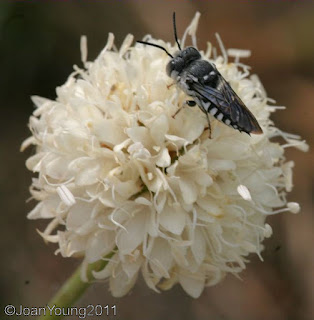Cuckoo Bees ( Coelioxys sp) family Megachilidae
A female Coelioxys will seek these out and apparently uses its sharp abdomen to pierce the cells of other Megachile species where an egg is then laid in the cell. The egg of the Coelioxys hatches before that of the Megachile and the newly-hatched larva crushes the Megachile egg with its large jaws. The Coelioxys larva can then feed on the contents of the cell. Pupation occurs within a cocoon spun within the host cell where the larva overwinters as a prepupa. The genus Anthophora excavates nest burrows in sandy soil or rotting wood, where they may also become the hosts of Coelioxys larvae.
As is the case with other cuckoo bees, each species of Coelioxys is a cuckoo (cleptoparasite) only of certain host species. In summer, Coelioxys can be seen on flowers feeding with its long tongue.
Female Coelioxys should be treated with care as they may sting; males are said to emit an unpleasant odour when handled.
Females have a 6 segment, elongated abdomen and the males a 7 segment spiny one.




